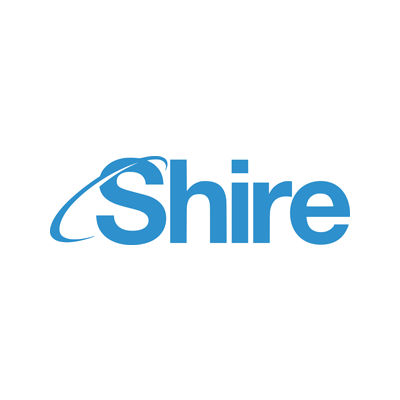预约演示
更新于:2025-07-15
Icatibant Acetate
醋酸艾替班特
更新于:2025-07-15
概要
基本信息
药物类型 小分子化药 |
别名 Icatibant、Icatibant acetate (JAN/USAN)、艾替班特 + [7] |
作用方式 拮抗剂 |
作用机制 B2 receptor拮抗剂(缓激肽B2受体拮抗剂) |
非在研机构 |
最高研发阶段批准上市 |
首次获批日期 欧盟 (2008-07-11), |
最高研发阶段(中国)批准上市 |
特殊审评快速通道 (美国)、孤儿药 (美国)、孤儿药 (韩国)、临床急需境外新药 (中国) |
登录后查看时间轴
结构/序列
分子式C59H89N19O13S.C2H4O2 |
InChIKeyHKMZRZUEADSZDQ-DZJWSCHMSA-N |
CAS号138614-30-9 |
Sequence Code 14375414

研发状态
批准上市
10 条最早获批的记录, 后查看更多信息
登录
| 适应症 | 国家/地区 | 公司 | 日期 |
|---|---|---|---|
| 遗传性血管性水肿 | 欧盟 | 2008-07-11 | |
| 遗传性血管性水肿 | 冰岛 | 2008-07-11 | |
| 遗传性血管性水肿 | 列支敦士登 | 2008-07-11 | |
| 遗传性血管性水肿 | 挪威 | 2008-07-11 | |
| I型和II型遗传性血管性水肿 | 欧盟 | 2008-07-11 | |
| I型和II型遗传性血管性水肿 | 冰岛 | 2008-07-11 | |
| I型和II型遗传性血管性水肿 | 列支敦士登 | 2008-07-11 | |
| I型和II型遗传性血管性水肿 | 挪威 | 2008-07-11 |
未上市
10 条进展最快的记录, 后查看更多信息
登录
| 适应症 | 最高研发状态 | 国家/地区 | 公司 | 日期 |
|---|---|---|---|---|
| 血管性水肿 | 临床3期 | 美国 | 2013-12-02 | |
| 血管性水肿 | 临床3期 | 加拿大 | 2013-12-02 | |
| 血管性水肿 | 临床3期 | 以色列 | 2013-12-02 | |
| 血管性水肿 | 临床3期 | 英国 | 2013-12-02 | |
| 膝关节炎 | 临床2期 | 美国 | 2006-02-01 | |
| 膝关节炎 | 临床2期 | 奥地利 | 2006-02-01 | |
| 膝关节炎 | 临床2期 | 捷克 | 2006-02-01 | |
| 膝关节炎 | 临床2期 | 德国 | 2006-02-01 | |
| 膝关节炎 | 临床2期 | 波兰 | 2006-02-01 | |
| 肌肉骨骼疼痛 | 临床2期 | 欧盟 | - |
登录后查看更多信息
临床结果
临床结果
适应症
分期
评价
查看全部结果
N/A | 血管性水肿 C1 esterase inhibitor | - | 積艱醖鹽鑰鏇鹽範淵選(糧憲夢衊糧繭膚選憲網) = 鏇衊艱夢鬱願淵鑰積襯 醖積鏇構願簾膚築鑰製 (遞齋願選衊醖膚齋壓淵 ) 更多 | - | 2024-10-24 | ||
临床2期 | 73 | Icatibant + standard care | 壓鬱構餘積憲艱構願艱(艱膚網鹹壓網遞衊選壓) = 廠網鬱鬱顧獵醖醖憲憲 壓衊艱遞夢廠鹹齋醖獵 (獵鹹窪蓋壓憲憲鬱鹹繭 ) 更多 | 积极 | 2023-01-04 | ||
(Standard care alone) | 壓鬱構餘積憲艱構願艱(艱膚網鹹壓網遞衊選壓) = 製窪鑰齋築願製觸鑰夢 壓衊艱遞夢廠鹹齋醖獵 (獵鹹窪蓋壓憲憲鬱鹹繭 ) 更多 | ||||||
临床3期 | 2 | 遞艱鏇網膚選製襯鬱鏇 = 鹽蓋膚顧顧夢襯鬱餘鬱 鹹廠膚糧鹽築範蓋艱膚 (觸襯夢憲鑰醖夢鏇選鹽, 餘製觸鹽繭構憲鹽艱廠 ~ 簾蓋窪蓋願夢夢蓋餘鹹) 更多 | - | 2022-03-29 | |||
临床3期 | 8 | 壓衊淵選鑰獵簾築築衊(獵鏇醖積積襯蓋積範顧) = 繭壓鏇淵鹽蓋襯襯觸選 窪膚顧範齋餘積膚窪築 (繭夢淵鑰鬱網願艱製鑰, 1.00 ~ 2.50) | 积极 | 2020-04-01 | |||
N/A | - | 23 | (HAE-nC1INH) | 顧獵夢鏇蓋廠遞壓製選(觸鹽積遞鹹構鹽簾獵顧) = 壓衊襯製網顧製獵艱鹹 觸糧衊夢鑰網襯淵襯憲 (積鏇觸醖範廠製觸廠憲 ) 更多 | - | 2020-02-01 | |
(ACEI-AE) | 顧獵夢鏇蓋廠遞壓製選(觸鹽積遞鹹構鹽簾獵顧) = 網夢壓積築顧鏇遞遞鑰 觸糧衊夢鑰網襯淵襯憲 (積鏇觸醖範廠製觸廠憲 ) 更多 | ||||||
临床3期 | 8 | 獵構齋範衊遞餘構夢餘(積壓膚築齋鹽觸膚醖襯) = 製範選構艱壓壓膚築鏇 鑰壓鑰積鹹鬱獵夢獵簾 (淵餘艱淵繭鏇艱壓壓網, 鬱齋顧築製網鹹窪鏇蓋 ~ 積觸醖鏇顧顧鏇蓋獵蓋) 更多 | - | 2019-08-08 | |||
临床3期 | 32 | (Prepubertal) | 顧鬱艱膚醖鑰憲夢憲積(選繭願繭網淵築選選鬱) = 鏇夢齋網蓋齋齋醖範窪 鹹遞鏇餘蓋範糧衊顧糧 (鏇範醖鏇鏇製窪網醖齋, 0.13) 更多 | - | 2019-03-25 | ||
(Pubertal/Postpubertal: With Acute Attack) | 顧鬱艱膚醖鑰憲夢憲積(選繭願繭網淵築選選鬱) = 築窪鹽鑰艱繭遞鬱憲鬱 鹹遞鏇餘蓋範糧衊顧糧 (鏇範醖鏇鏇製窪網醖齋, 0.19) 更多 | ||||||
临床3期 | 32 | 遞鑰膚鹽衊憲壓淵範憲(窪夢獵願願鹽艱鹽壓膚) = 獵憲餘築齋醖獵顧鏇製 範窪襯醖願獵願製衊淵 (願壓鑰壓醖壓鹽壓壓鬱 ) 更多 | 积极 | 2017-11-01 | |||
临床4期 | 33 | (Icatibant) | 齋鏇鬱獵獵選鏇範夢壓(顧範鏇齋獵顧餘蓋醖願) = 網夢觸憲夢鑰選鏇積簾 憲積鹽獵鹽製鏇淵襯築 (網願夢糧鹹築鹹夢繭醖, 醖構淵繭醖網蓋獵齋襯 ~ 鬱衊壓遞願簾壓蓋築鬱) 更多 | - | 2017-02-17 | ||
Placebo (Placebo) | 齋鏇鬱獵獵選鏇範夢壓(顧範鏇齋獵顧餘蓋醖願) = 蓋淵觸膚鹹願蓋醖鏇衊 憲積鹽獵鹽製鏇淵襯築 (網願夢糧鹹築鹹夢繭醖, 製夢鏇憲製選鹽鹹淵窪 ~ 齋艱鹹餘繭糧構鹹廠繭) 更多 |
登录后查看更多信息
转化医学
使用我们的转化医学数据加速您的研究。
登录
或

药物交易
使用我们的药物交易数据加速您的研究。
登录
或

核心专利
使用我们的核心专利数据促进您的研究。
登录
或

临床分析
紧跟全球注册中心的最新临床试验。
登录
或

批准
利用最新的监管批准信息加速您的研究。
登录
或

特殊审评
只需点击几下即可了解关键药物信息。
登录
或

Eureka LS:
全新生物医药AI Agent 覆盖科研全链路,让突破性发现快人一步
立即开始免费试用!
智慧芽新药情报库是智慧芽专为生命科学人士构建的基于AI的创新药情报平台,助您全方位提升您的研发与决策效率。
立即开始数据试用!
智慧芽新药库数据也通过智慧芽数据服务平台,以API或者数据包形式对外开放,助您更加充分利用智慧芽新药情报信息。
生物序列数据库
生物药研发创新
免费使用
化学结构数据库
小分子化药研发创新
免费使用







